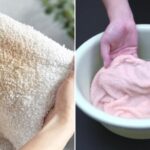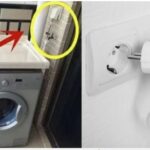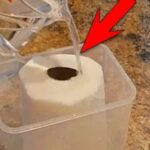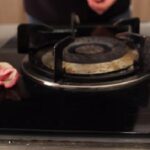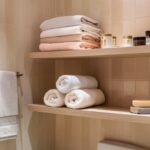Maintaining a clean and comfortable living environment is important, and many people dedicate time to cleaning their homes daily. However, there are objects and areas that may appear clean at first glance but, in reality, harbor serious health hazards due to hidden bacteria and germs. Here are four examples of seemingly clean things that actually pose significant hygiene concerns.
Showerheads
Showerheads are essential fixtures in bathrooms, used for daily bathing. However, due to the small size of the water outlet holes, showerheads can easily become clogged with built-up residue and impurities over time. In the humid environment of the bathroom, bacteria thrive and proliferate.
This accumulation not only reduces the efficiency of water flow but also contaminates the water supply. Bathing in water from a clogged showerhead can irritate the skin, leading to itching or allergic reactions.

Showerheads are indispensable fixtures in bathrooms for daily bathing.
Tip for cleaning showerheads:
You can use a descaling agent containing citric acid to clean your showerhead. Citric acid breaks down and removes residue while also disinfecting and sterilizing.
First, prepare some warm water and add citric acid to it. Soak the detached showerhead in this solution for a few hours. Afterward, you’ll find that the residue and impurities have been eliminated. The disinfecting power of citric acid helps eliminate bacteria, making showering safer.
Washing Machines
Washing machines are essential appliances in many households, saving time and effort in doing laundry. However, with each use, they can accumulate dirt and residue. The high humidity inside the machine provides an ideal environment for bacteria and viruses to flourish.
Research shows that if washing machines are not cleaned regularly, the number of bacteria can reach concerning levels within just six months. When washing clothes, bacteria and dirt from the machine can make the laundry even dirtier.
Tip for cleaning washing machines:
You can use white vinegar and baking soda to clean your washing machine. White vinegar helps soften stains, disinfect, and improve cleaning efficiency, while baking soda is a natural cleanser with sterilizing, deodorizing, and whitening properties.
First, soak a towel in white vinegar and place it in the washing machine. The vinegar will penetrate the machine’s nooks and crannies, softening the stains and killing bacteria. Next, add some baking soda to the machine and select a wash cycle. Once the cycle is complete, the dirty water is drained away, leaving your washing machine cleaner.
Refrigerators
Refrigerators are essential appliances in every home, mainly used for food storage. Many people focus on cleaning the interior compartments but neglect an equally important part: the rubber gasket that seals the door.
Over time, if the rubber gasket is not cleaned and is exposed to a humid environment, it becomes a breeding ground for bacteria and mold. Those black spots on the gasket are not ordinary dirt but mold, which can contaminate your food if left unattended.

Refrigerators are essential for food storage in every household.
Mold contains aflatoxin, a potent carcinogen that poses a severe health risk.
Tip for cleaning refrigerator door seals:
You can use alcohol and Coca-Cola to clean the rubber gasket. Alcohol has disinfecting properties, while the acid in Coca-Cola effectively dissolves mold.
Mix the alcohol and Coca-Cola in a 1:1 ratio and shake well. Use a gauze pad, face towel, or wet cloth to carefully wipe down each corner of the rubber gasket. To reach into the crevices, you can wrap a thin piece of cardboard with gauze. After wiping, rinse with clean water to remove any residual cleaning solution.
Moldy Cutting Boards
Cutting boards come into frequent contact with food and water, making them susceptible to mold. To ensure hygiene, cutting boards should be replaced annually. Food residue left on the board can produce aflatoxin, a carcinogen.
Many people overlook this and continue using moldy cutting boards for years, which is hazardous.
Tip for cleaning cutting boards:
Sprinkle salt on the cutting board and rub vigorously for basic disinfection. Then, apply baking soda to remove stains, and pour a small amount of white vinegar to soften and completely sterilize the board.
Let this mixture sit on the cutting board for 10 minutes, then rinse thoroughly with clean water and air-dry. For your safety and health, it’s crucial to regularly clean and maintain household items. Only when they are truly clean can you confidently enjoy the convenience they offer. Inspect and clean these items regularly to maintain a healthy living environment.

























